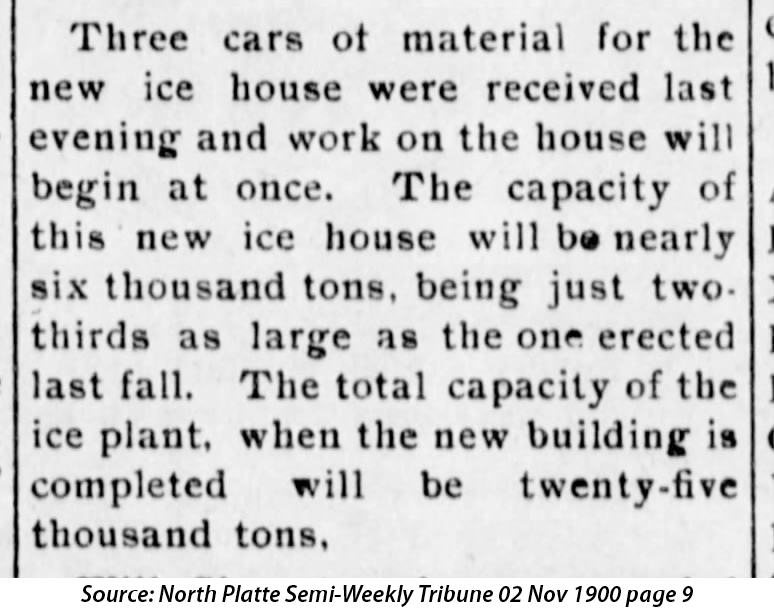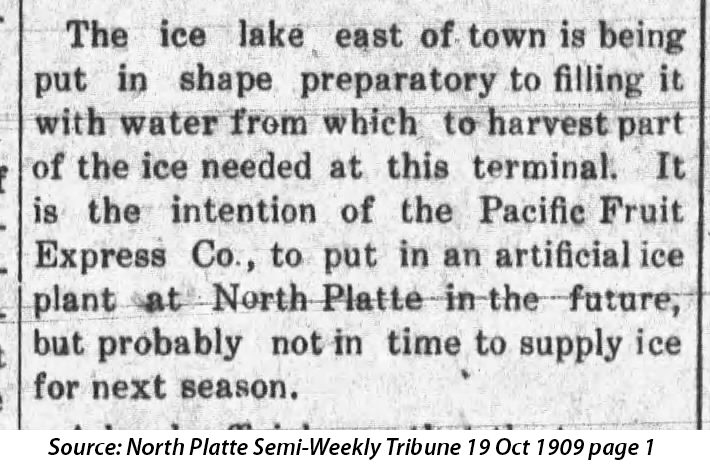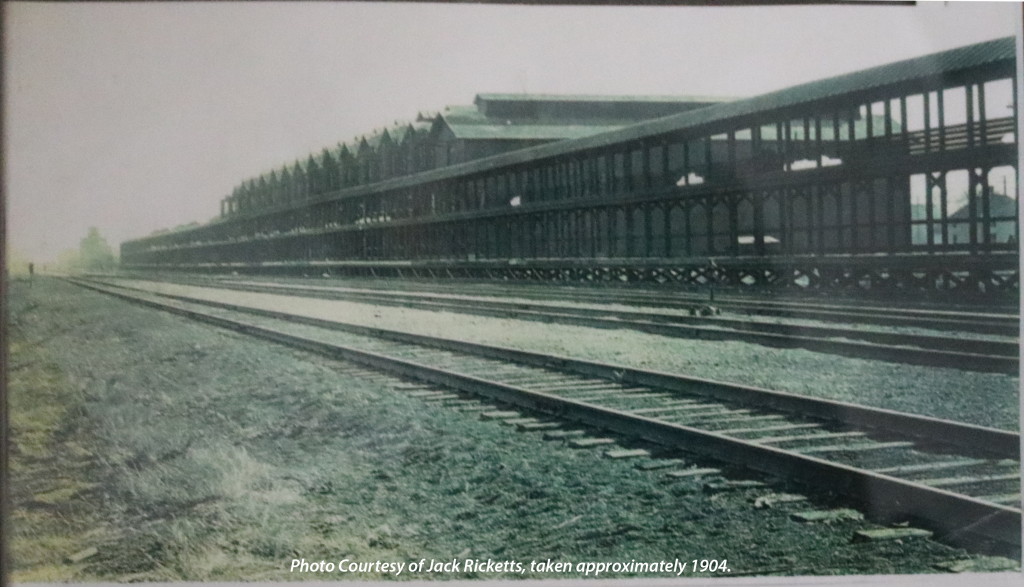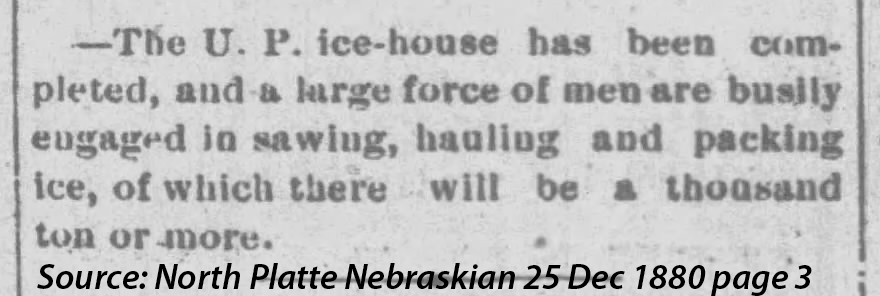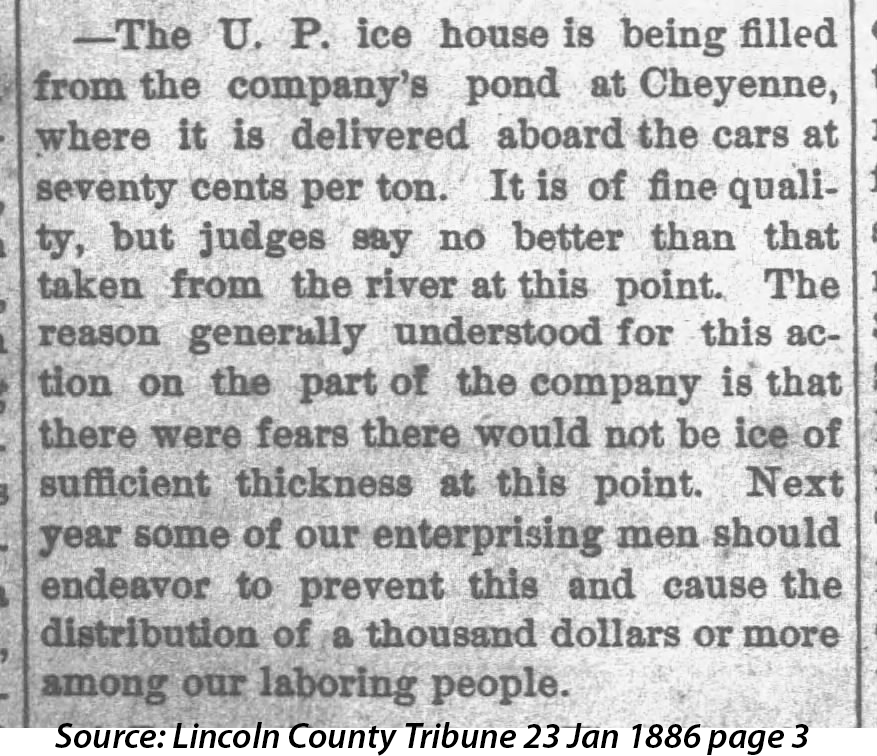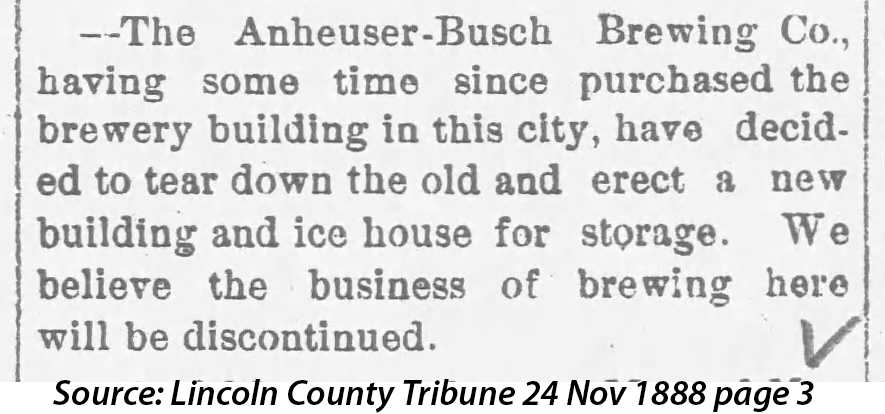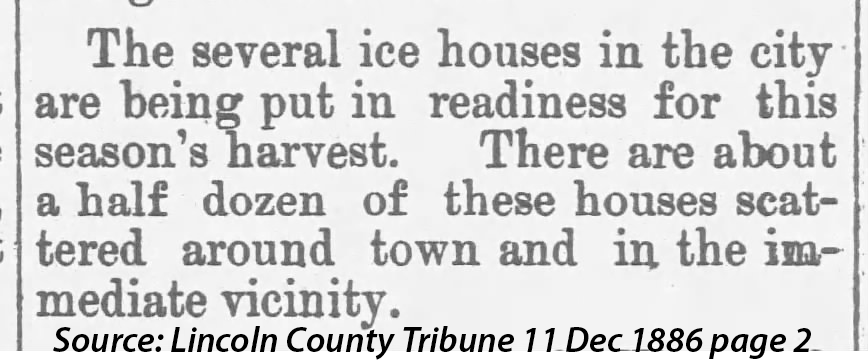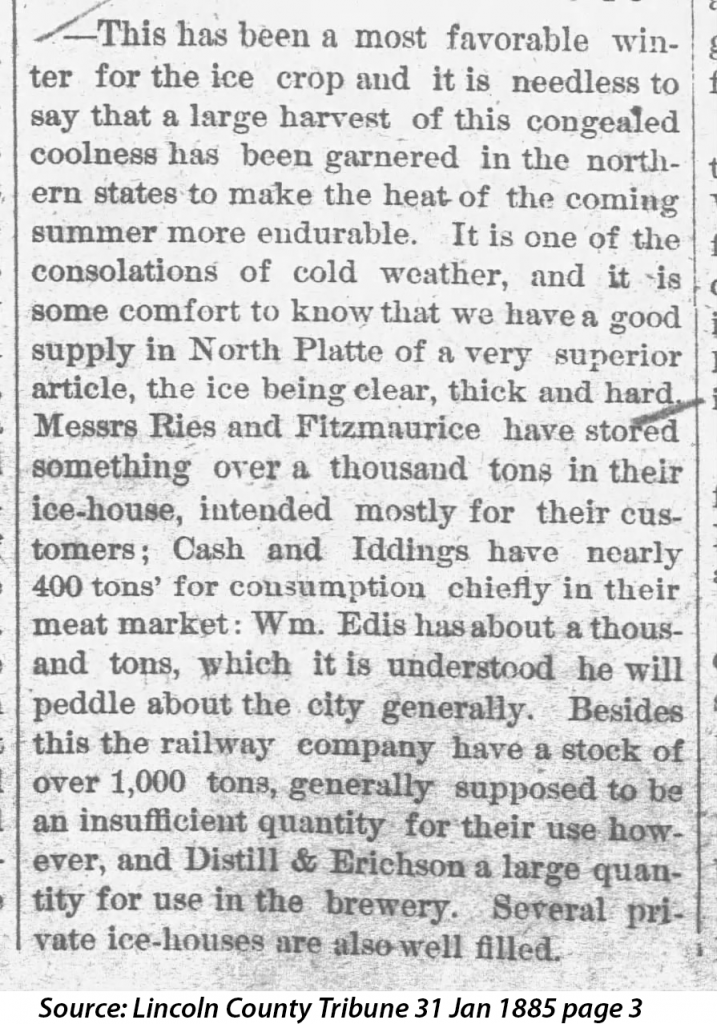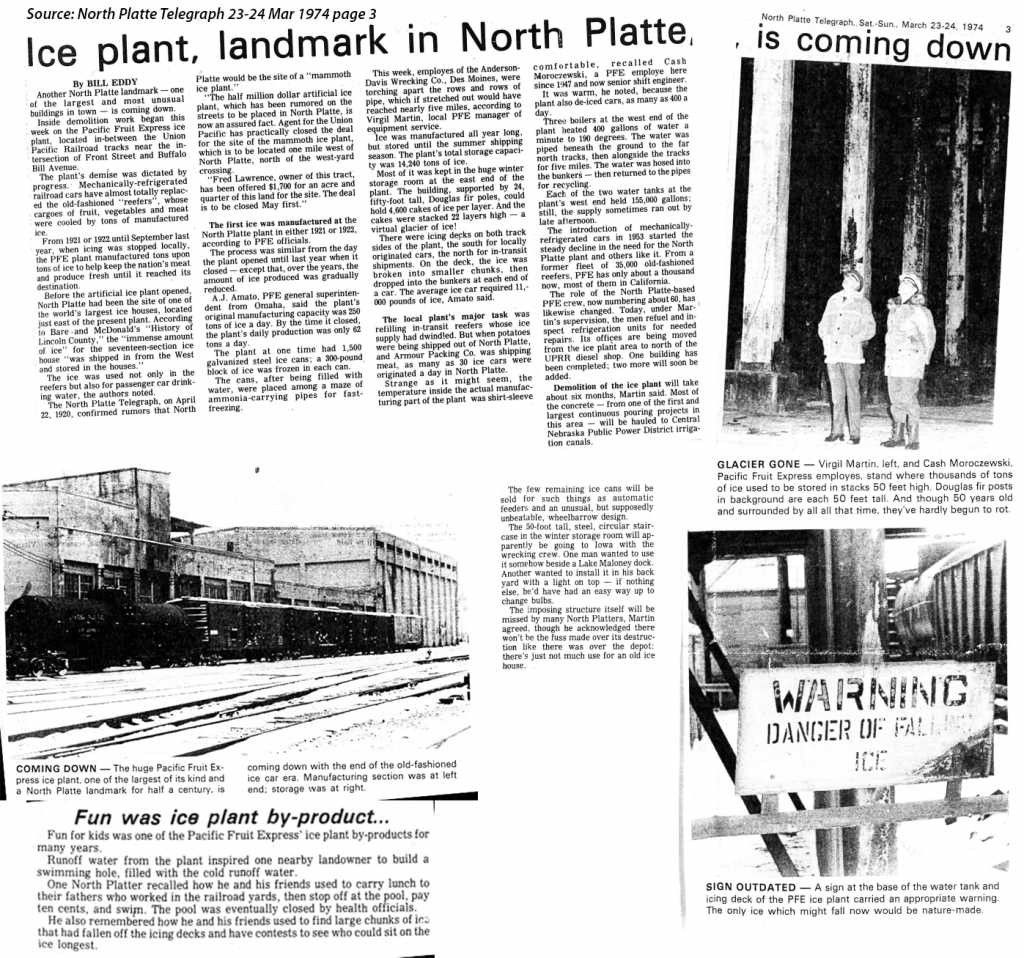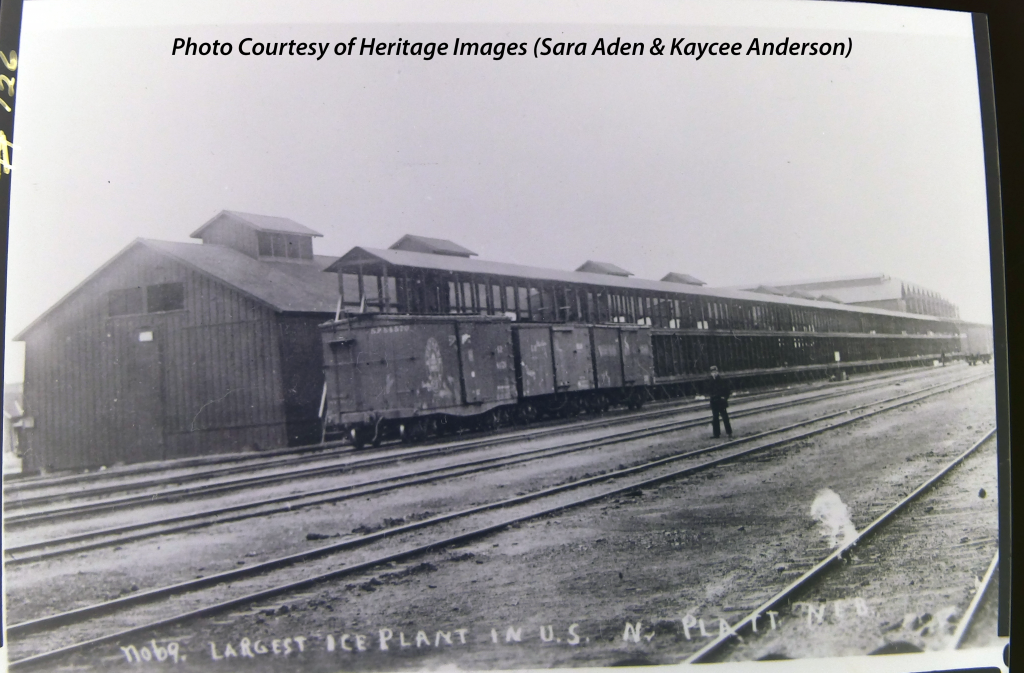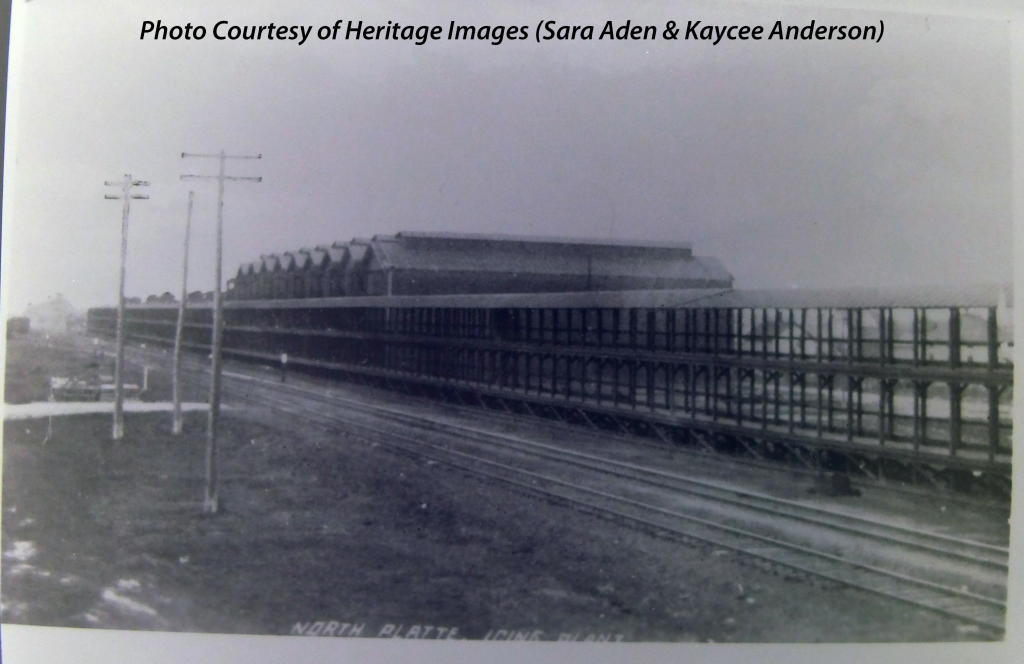Originally published to Facebook on September 17, 2021.
As the summer begins to fade, we thought we would take a look back at something we rely on but often take for granted today…ice! That’s right… ice, ice, baby.
Today’s refrigerators and freezers run mostly on electricity. Electricity was discovered by Benjamin Franklin in 1752, however it wasn’t until 1925 that half of the homes in the United States had electricity. [1] So how were things like milk, eggs, butter, and other staples we often keep refrigerated today, staying cold before electricity? The answer? ICE. Today we can go to most any convenience or grocery store and buy ice, in bags, by the pound. But before “artificial ice”, there was an entire industry created to harvest winter ice from natural resources; and keep it cold and frozen, well into the hot summer months.
Ice house construction to keep ice through the summer, like any technology, evolved over the centuries. It started with Greeks and Romans making ice last by burying it underground. Roman Emperor Nero (37-68 BC) was said to have an appetite for mountain ice with honey or fruit, the earliest form of today’s ice cream, and a tasty treat in any era. [2] The first ice house in America was said to be located in Philadelphia, at the residence of Robert Morris (known as the “Financier of the Revolution”), and was actually an ice pit based on European design.[3] In Nebraska, ice houses were being constructed by communities and rural neighbors near bodies of water, and it is unclear where the first ice house was constructed in the state, but chances are it was near the Missouri River. Ice was becoming a necessity and no longer a luxury, so the North Platte Daily Telegraph published a Do-It-Yourself article in 1908 to help local farmers construct their own modern ice house.
The young North Platte community was harvesting ice from the rivers as early as 1877. Three years later, in 1880, the Union Pacific built a 1,000-ton ice house. By 1885, the ice harvested from the rivers was used by many merchants who also constructed their own ice houses throughout town. In November of 1888, Anheuser-Busch Brewing Co. tore down their old brewery building in town, originally North Platte brewery. Then as now, zymology beverages taste better chilled. And so their new Anheuser-Busch building would include an ice house to be filled with ice harvested from local water sources. During the 1880’s, due to local demand on ice harvesting operations and some unusually warm temperatures at times, North Platte’s Union Pacific Ice House was also being filled with ice from a company pond in Cheyenne that was shipped by rail car to North Platte. In 1900, Union Pacific continued to add ice houses to their ice plant, reaching a capacity of 25,000 tons. The Pacific Fruit Express Co was formed in 1906 and in 1909, expressed intentions of putting an artificial ice plant in North Platte. By 1910, North Platte would boast that the Union Pacific Ice Houses were the largest in the world. [4]
The Pacific Fruit Express Company was created with the goal of constructing insulated ice cars to transport high demand fruit across the country. [5] In 1974, the Pacific Fruit Express ice plant at North Platte was demolished. For decades kids played in the runoff water that pooled near the structure, which ended when health officials shutdown that practice. It was an imposing iconic structure in its time and its demise was one of technological advancement, as much as anything else. Modern refrigeration cars and home freezer options put the necessity of a community ice house on the chopping block. Today, ice is still a necessity, but it does not require what it once took for us humans to stay cool in the summer heat.
The next time you visit one of our local ice creameries, remember how much work would have once gone into making your favorite frozen treat. Finally a Friday cube of wisdom…life is like a frozen treat, enjoy it before it melts!
[1] https://www.nps.gov/…/the-electric-light-system…
[2] http://www.icecreamhistory.net/frozen…/ice-cream-timeline/
[3] https://www.ushistory.org/presidents…/history/icehouse.php
[4] https://history.nebraska.gov/…/cool-nebraskas-ice-industry
[5] https://en.wikipedia.org/wiki/Pacific_Fruit_Express
